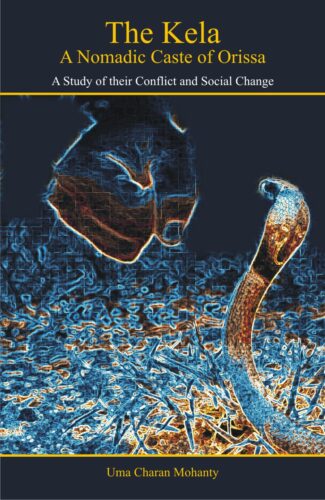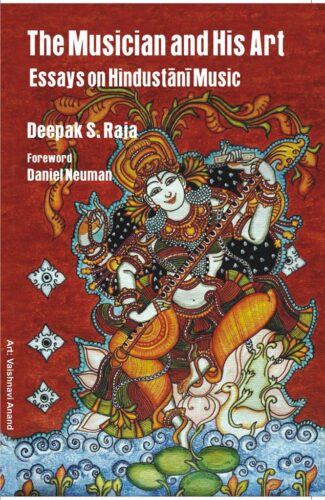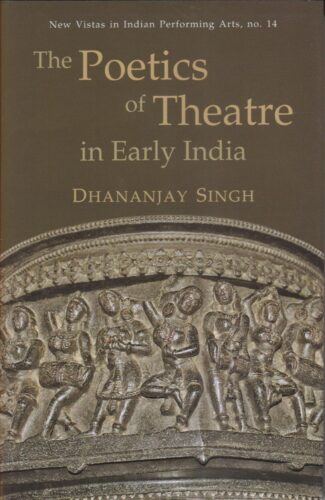Showing 1001–1010 of 1165 results
The Kalacakra Tantra was the last major Tantrik text written in India before the decline of Buddhism. The book has left indelible influence over different regions of Asia in last thousand years of its journey. Apart from the Vimalprabha commentary composed during the mid-11th century, there is no verse by verse commentary available to the general reader. Kumar has attempted translation of the full text from Sanskrit original and has also contributed a new detailed commentary. This book locates mysterious Sambhala and Oddiyana. The book further delves into the chronology of legendary Kalki kings.

The core of this book is devoted to the karaka theory as it is taught in the Bhattikavya. In the introductory section, an outline of this kavya and a summary of the authors findings in his previous work on it are given.
There has been a steady flow of scholarship dealing with the karaka theory as expounded in various grammatical works. The purpose of the present book is to conduct a searching examination into a text which has received little attention from Paninian scholars and whose voice has remained unfamiliar, the Bhattikavya. One can see from Bhattis illustrations of the karaka rules how he interprets them, and also how he interweaves the illustrations with the Rama story in his poetic work, which is intended as a textbook on Sanskrit grammar. In the introductory section, an outline of the Bhattikavya and a summary of the authors findings in his previous work written in Japanese on this kavya (2017, Kyoto: Hozokan) are given. The present volume also includes two appendices that take up related questions concerning poetic composition and Vedic usage.

The book meticulously deals with the socio-economic, political and cultural facets of the Kela life, their problems in life and how they solve them. It uncovers the romantic life of the Kelas, their family organization, gender issues, the significance and impact of their leadership and caste panchayats, their free love and divorce practices, and their simple but unique lifestyle.
This monograph provides a vivid socio-economic account of a nomadic community, the Sapua Kelas or the snake-charmers of Orissa. Of all the nomadic castes and communities of Orissa, the Sapua Kelas have, perhaps, a unique traditional social organization and interesting lifestyle. Amidst the sweeping social, economic and political changes, the Kela community has retained its features of traditional caste system and is undergoing a process of social mobility which is closely related to the traditional caste system where both endogenic and exogenic factors come to play.
The book meticulously deals with the social, economic, political and cultural facets of the Kela life, their problems in life and how they solve them. It uncovers the romantic life of the Kelas, their family organization, gender issues, the significance and impact of their leadership and caste panchayats, their harmless deceptive methods for earnings and their simple but unique lifestyle. It also delves deep into the perception of outsiders about the Kela life, especially their free love and of the non-hesitancy of the Kela women in divorcing their life partners.
This, once an untouchable communitys struggle for social mobility, is still an ongoing process. From a nomadic and semi-settled lifestyle, with the advent of the democratic institutions, the Kelas have got a new scope for political and social participation, enabling them to look beyond their traditional occupation of snake-charming, and thus attuning their lifestyle to that of the surrounding population. The book is, therefore, an attempt to show how the nomadic folk society of the Kelas is marching towards the settled life of the Indian peasantry, causing their cultural traits vanishing fast, in favour of the neighbouring culture of the other castes.

This book in three parts is unique as it depicts the life of this spiritual preceptor, chronologically detailing the varied roles he played to change the social, economic, political, religious and spiritual life of the people and the countless incredible miracles he performed during his 72 years of worldly existence.
The relevance and importance of the teachings of the saint-poet-philosopher-social reformer Sree Narayana Guru are increasing day by day and have been influencing millions of people all over the world. Of the hundreds of biographies of Guru, this book in three parts is unique as it depicts the life of this spiritual preceptor, chronologically detailing the varied roles he played to change the social, economic, political, religious and spiritual life of the people and the countless incredible miracles he performed during his 72 years of worldly existence.
The book provides an in-depth study of the social conditions prevailing in the nineteenth and twentieth centuries of Kerala. A picture is clearly drawn on how an avarna liberated a society steeped in ignorance to such heights that the higher-ups in social order could not even dream of, by a bloodless spiritual revolution. The different roles Guru enacted in his life and the numerous miracles he performed, not highlighted so far in any biography, find a prominent place in this book. The life of Guru is presented here as it was. Readers can form their own conclusions about this great soul. The Foreword by Prof. M.K. Sanoo is a window to enter into the insight of the life of the Guru.

It shows how reality is generated in a recursive fashion and uses this insight to illuminate many puzzles of history and culture. The book straddles history and science, aesthetics and religion, and politics and power, by juxtaposing material in ways that provide surprising new insights.
The Loom of Time shows how reality is generated in a recursive fashion and uses this insight to illuminate many puzzles of history and culture. Recursion is at basis of mimicry in nature and germination and development of biological organisms; it also provides structure to mental images of physical systems and human behavior. It helps us make sense of the repeating patterns across cultures and nations, understand the manner in which technology is impacting society, and see the reasons behind the crises of the contemporary world.
The topics covered in this book include philosophical bases of recursion, cosmologies old and new, religion and modernity, globalization and bureaucratic control, loss of meaning and freedom, spirituality, narcissism leading to despair, and limits of medicine. It deals with problems of employment and questions of meaning of life when robots and other machines become more numerous than humans. The book straddles history and science, aesthetics and religion, and politics and power, by juxtaposing material in ways that provide surprising new insights.

This book features the uniqueness of the relationship between Hindustani musician and his art. Hindustani music is not merely north Indian art music. It is inextricably linked to a multiplicity of other musical traditions and is an active participant in the totality of the cultural process.
This book presents a collection of essays and lectures written by the author between 2011 and 2018. Its underlying theme as suggested by its title is the uniqueness of the relationship between the Hindustani musician and his art. This uniqueness is moulded by the fact that the tradition enjoins upon the performer the simultaneous role of a composer. This makes Hindustani music a three-dimensional art: contemplative, expressive and communicative. These three components serve to make Hindustani music a remarkable manifestation of continuity within change, and individuality within conformism.
Viewed from this perspective, Hindustani music is not merely north Indian art music. It is inextricably linked to a multiplicity of other musical traditions folk, devotional, tribal, martial and popular and is an active participant in the totality of the cultural process. Every piece of performed music speaks, in some manner, on behalf the generation performing it, and addresses the corresponding generations of audiences. For the author, therefore, it is not merely sufficient to understand what Hindustani music is. It is necessary also to seek insights into why it is what it is.
In this book, the author relentlessly pursues his intellectual aims by borrowing ideas from a wide range of disciplines: sociology, linguistics, cultural anthropology, acoustics, aesthetics, demography, economics, marketing finance, psycho-analysis, mythology, philosophy and even mathematics. Despite its diverse intellectual canvas, the book retains the essential Indian-ness of the authors argument, and simultaneously addresses an international readership.

This book discusses the quintessential aspects of George Santayana’s wide and comprehensive philosophy. Its critical and comparative discussions have taken place centring round the problems of Epistemology, Metaphysics, Aesthetics, Ethics and Religion, thereby making it all the more interesting.
This book discusses the quintessential aspects of George Santayana’s wide and comprehensive philosophy. Its critical and comparative discussions centre round the problems of Epistemology, Metaphysics, Aesthetics, Ethics and Religion. This makes it all the more interesting.
What is noteworthy about this book is that it shows how naturalism serves as a basis of the idealistic philosophy of George Santayana. Moreover, the illustrious part of this treatise is that essence, as discovered by Santayana by the doubting process, serves as the keynote of his whole philosophy.
The exposition of Santayana’s philosophy on the basis of the above two points is an outstanding feature of the present work. What is captivating about this book is that it shows how the natural gets reconciled with the ideal by making the former the ground of the latter.

This book critiques the poetics of theatre in early India by interpreting a system of theatre and performance along several themes such as theatre’s place in the premodern interdisciplinary knowledge systems, theatre space and architecture, cognition and emotion, performance, experience and consciousness, human and social behaviour, and music.
Theatre discourses of early India present theatre (natya) as an integrated art form, and the poetics of theatre as an interdisciplinary system of thought and performance. Theatre functions as a composite art production comprising dance (nrtya), song (gana), instrumental music (Atodya) and enactment (abhinaya). The poetics of this theatre provides thoughts, techniques, and instrumental frameworks for performance, based on an interdisciplinary reflection upon space, body, mind, motion, sound, memory, consciousness and theatre in relation to the other disciplines of knowledge.
This book attempts to examine the poetics of theatre in early India by interpreting a system of theatre and performance along several themes such as theatre’s place in the premodern interdisciplinary knowledge systems, theatre space and architecture, cognition and emotion, performance, experience and consciousness, human and social behaviour, and music. While focusing mainly on the aphoristic statements on theatre by Bharata in his Natyasastra (third century bce), the book responds to the principles of theatre and literature discussed and debated in a tradition of texts such as Nandikesvara’s Abhinaya Darpana (fifth-fourth century bce), Rajasekhara’s Kavyamimasa (tenth century ce) and Abhinavagupta’s Abhinavabharata (tenth-eleventh century ce). The major concepts elaborated in the book consist of the types of theatre space (ranga), forms of mental/emotive states (bhavas), forms of consciousness (rasas), human and regional variations of performance (vrtti and pravrtti), forms of vocal and instrumental music (gana and atodya), and various others. Divided into eight chapters, each addressing an aspect of theatre, the book is premised upon the argument that theatre poetics of early India presents a coordinated world of inner experience rooted in the self (citta) formed by cognition, emotion and consciousness, but that which develops on stage into an artistic network created by the primitive human behaviour, body, senses, space, sound and the external world, including the varieties of the social world.

‘Thaat’ is the method of dividing ragas in Hindustani classical music. The main raga of each ‘Thaat’ is called the ‘Ashraya’ raga and other ragas are ‘Ashrita’ ragas. This book is an attempt to make the readers aware of the ‘Ashraya’ ragas. The author has very clearly presented the concept of Ashraya’ raga and its significance.
Music has been the subject of study in India since Vedic period. Various ragas are the life of Indian music. ‘Thaat’ is the method of dividing ragas in Hindustani classical music. The main raga of each ‘Thaat’ is called the ‘Ashraya’ raga and other ragas are ‘Ashrita’ ragas. Extracting from the texts written by Pt. Vishnu Narayana Bhatkhande, Pt. Narayana Moreshwar Khare and other well-known musicians, this book is an attempt to make the readers aware of the ‘Ashraya’ ragas. Through this book, Shobha Singh has very clearly presented the concept of Ashraya’ raga and its significance. The language of this book is simple and easy to comprehend. भारत में संगीत वैदिक काल से ही अध्ययन का विषय रहा है। विभिन्न राग भारतीय संगीत की जान हैं। थाट (अथवा ठाट) हिंदुस्तानी शास्त्रीय संगीत में रागों के विभाजन की पद्धति है। प्रत्येक थाट के प्रमुख राग को आश्रय राग एवं अन्य रागों को आश्रित राग कहा जाता है। पं. विष्णु नारायण भातखण्डे, पं. नारायण मोरेश्वर खरे एवं अन्य जाने-माने संगीतज्ञों द्वारा लिखित ग्रंथों को निचोड़ते हुए, यह पुस्तक पाठकों को आश्रय रागों के बारे में अवगत कराने का प्रयास है। इस पुस्तक के माध्यम से शोभा सिंह ने आश्रय राग की अवधारणा और उसे महत्व को बहुत ही स्पष्ट रूप से प्रस्तुत किया है। इस पुस्तक की भाषा सरल एवं पठनीय है।
| There are no products |